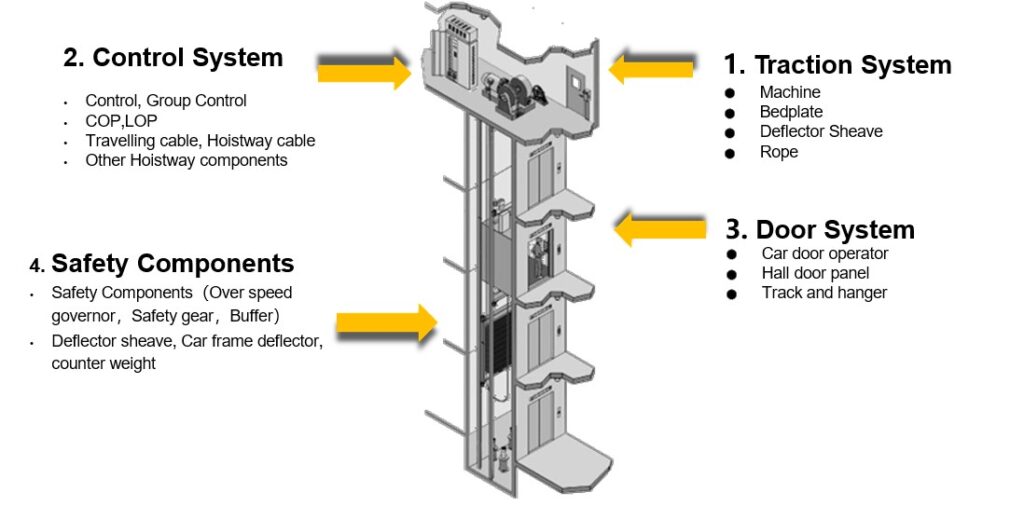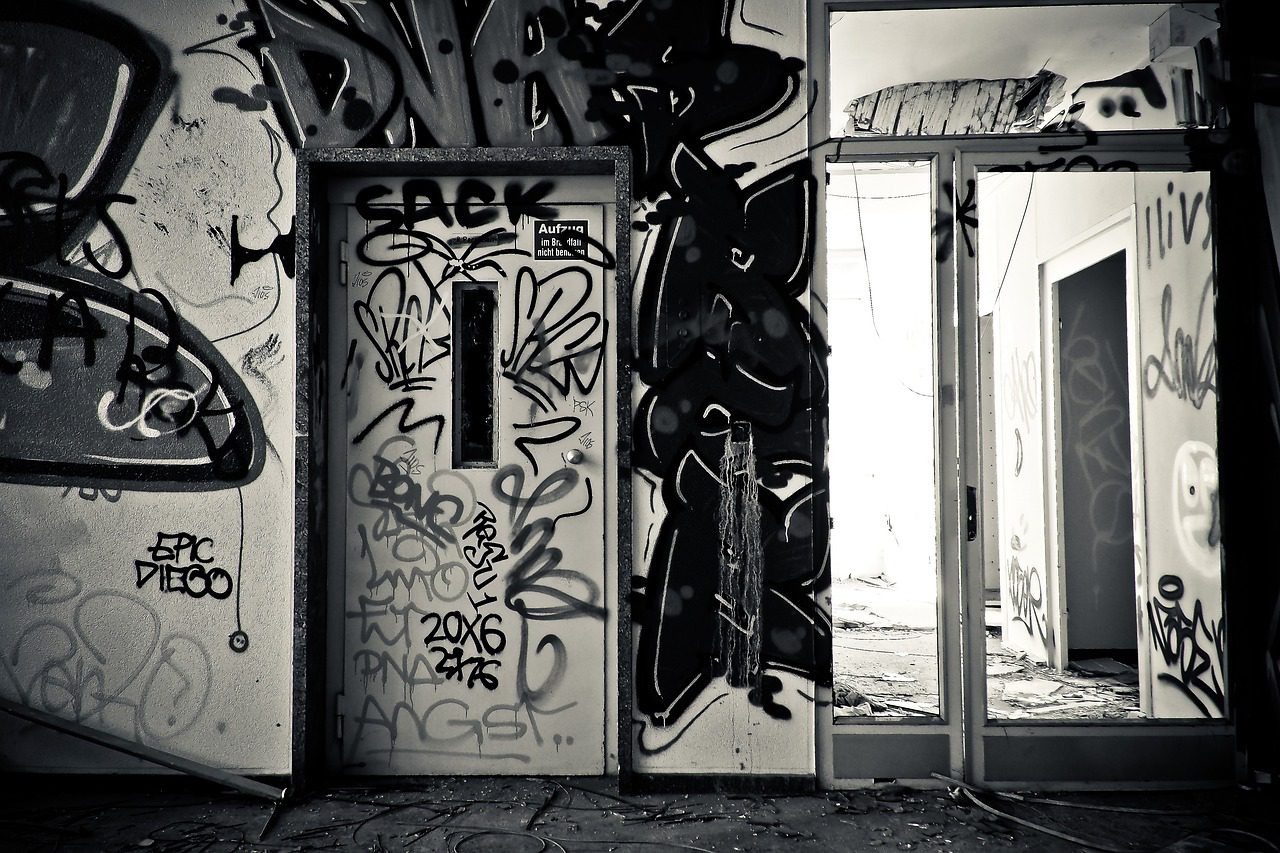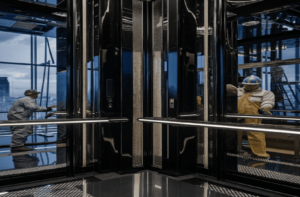Breathe New Life into Your Elevator with Modernization
When Do You Need Elevator Modernization?
Elevators, like trusty workhorses, ferry us efficiently between floors for years on end. However, just like any machine, they have a finite lifespan. Typically, elevators reach their peak performance around the 20-year mark. After that, you might encounter a few unwelcome signs:
- Rising maintenance costs: As parts wear down, repairs become more frequent, driving up maintenance expenses.
- Frequent breakdowns: Imagine waiting for an elevator that seems to take an eternity to arrive, only to have it stall mid-journey. Frequent breakdowns disrupt building operations and create inconvenience for tenants.
- Outdated features: The world of elevator technology is constantly evolving. Older elevators might lack features like automatic door reopening or energy-saving options.
- Worn-down aesthetics: A tired-looking elevator interior can create a negative first impression for visitors or tenants. Peeling paint, dull lighting, and outdated fixtures don’t exactly scream sophistication.
If these issues sound familiar, it’s time to consider elevator modernization. It’s not about replacing your entire elevator system; it’s about strategically upgrading key components to improve safety, efficiency, aesthetics, and overall value.
Elevator Modenization Steps by Steps
Planning & Logistics
Modernizing an elevator is a complex project that requires careful planning. Here are several logistical points to consider:
- Hiring a licensed elevator contractor is necessary for the completion of the work.
- Local and state permits must be obtained before starting the modernization.
- It’s important to be aware of the project timeline and how long the elevator will be out of service.
- Coordination with other trades may be necessary for tasks such as updating fire alarm systems, electrical panels, HVAC systems, and more.
Finding Your Modernization Partner
The key to a successful elevator modernization project lies in choosing the right company. Look for a team with a proven track record. Here are some key qualities to consider:
- Experienced engineers: A team with a strong combination of electrical and mechanical engineers ensures a comprehensive approach to modernization.
- Brand expertise: Look for a company that has experience working with various elevator brands, both established names and lesser-known manufacturers.
- Comprehensive after-sales services: Modernization shouldn’t be a one-time event. Choose a company that offers ongoing maintenance and support to keep your elevator running smoothly for years to come.
Different functional steps of elevators can be modernized.
The beauty of elevator modernization is its flexibility. You can address specific areas that need the most attention. Here’s a breakdown of some common upgrade options:
- Electrical System Upgrade: This is the heart of your elevator. Modernization involves replacing outdated controllers, motors, and wiring with newer, more efficient technology. Advanced sensors and monitoring systems can also be incorporated to optimize performance and ensure passenger safety.
- Control System Revamp: Outdated control systems can lead to sluggish response times and safety concerns. Upgrading to a modern system offers improved performance, reliability, and advanced features. Integration with Internet of Things (IoT) devices and artificial intelligence (AI) can further enhance monitoring and control capabilities, allowing for predictive maintenance and real-time optimization.
- Cabin and Door Refresh: Even if your elevator mechanics are functioning well, the interior might look tired and outdated. Many companies offer a variety of modern and durable cabin design options and accessories. From sleek wall panels and energy-efficient lighting to stylish buttons and comfortable handrails, you can create a more inviting and aesthetically pleasing elevator experience.
- Traction System Transformation: The traction machine is the workhorse that propels the elevator. Replacing a worn-out or obsolete traction machine is crucial for safety and passenger comfort. Modernization options include geared, gearless, and steel belt traction machines, all designed for increased efficiency and significant energy savings.

Investing in elevator modernization is a wise decision. It ensures your elevator continues to operate smoothly, safely, and efficiently for years to come, while enhancing the overall value and aesthetics of your building.
Things need to be done after modernization.
- Training and Handover:
- Provide training for building staff on operating and maintaining the new system.
- Hand over manuals, maintenance schedules, and warranty information.
- Address any questions or concerns from building management or occupants.
- Post-Modernization Support:
- Offer ongoing maintenance and support services.
- Monitor performance and address any issues promptly.
- Schedule regular inspections and maintenance to extend the elevator’s lifespan.
- Documentation and Record-Keeping:
- Maintain detailed records of the modernization process.
- Keep documentation of warranties, inspections, and maintenance activities.
- Update building records and compliance documents as necessary.
By following these steps, elevator modernization can be effectively managed to ensure improved performance, safety, and compliance with current standards.
Read out our other related article by clicking here.
To get a modernized or replacement solution, you can contact MCE, Nidec Elevator Group





Pingback: Destination-Based Dispatch Elevators Explained
Pingback: Importance of Elevator Modernization